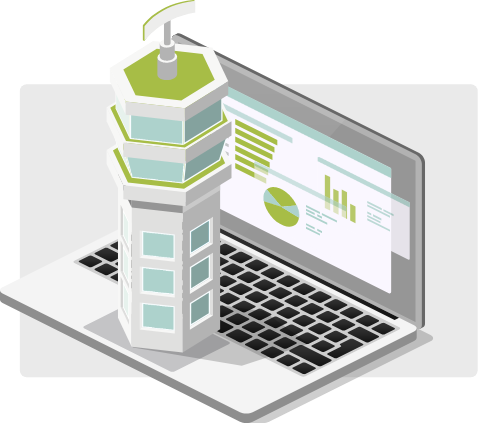New frontiers in supply chain analytics: Decision intelligence in practice
In today’s fast-paced and increasingly competitive marketplace, decision-making at the speed of business can accelerate value creation. How can companies deal with the growing need for real-time or near real-time decision-making in the face of growing political and economic complexity while coming to grips with the explosion of available data?
New frontiers in supply chain analytics are being charted today, including advancements in digital modeling, process mining, actionable dashboards, eXplainable AI, and green planning. Here’s an overview of the challenges and solutions.

Supply chain analytics facing new challenges
The art of providing relevant insights to inform supply chain decision-making is reaching new levels. The staggering range of available data provides great opportunities but also brings challenges related to business practices. Here are three major challenges for data-driven supply chain decision-making.
1. A wealth of data is left un(der)used
Analysts have access to a wealth of data related to the supply chain, including data generated by business transactions, inventory tracking, supplier monitoring, consumption, logistics activities, and more. The number of data sources and the amount of available data is growing exponentially and will continue to do so. With the addition of a vast range of public domain data, companies have access to an increasingly rich and diversified source of information to underpin their decision-making. However, research indicates that only a fraction of the available data is effectively being analyzed. In addition, there are still significant gaps in the data of most companies. For example, companies are just beginning to find out what data they need to reduce carbon emissions to make their supply chain sustainable, let alone which combined data points will reveal the amount of scope 3 emissions they generate indirectly. The fact that supply chain data collection and analysis is still immature at most companies is due to multiple reasons:
- Much of the unanalyzed data is unstructured, meaning that analysis is difficult and requires innovative data analysis techniques.
- Many companies lack expertise in data management and data science, as experts in these fields are highly sought-after on the labor market.
- Some companies are still insufficiently aware of the power and potential of data analytics.
2. Analytics need to be actionable (in near real-time)
If analysis itself is already mightily complex, more challenges arise from the fact that decisions need to be made faster and faster in response to sudden events such as material shortages, (geo)political turmoil, weather conditions, or rapidly changing circumstances. The growing complexity of international politics and economics means that such events occur more frequently than ever.
The classic functions of analytics are to accurately describe the current supply chain status, predict the most likely outcome of current events, and prescribe the best way to address particular problems. But these functions fail to deliver if it takes the system hours if not days to provide workable answers. On the operational level, decisions increasingly need to be made within 24 hours or even within the time of a work shift. What’s more, the number of events impacting the supply chain is growing so big that there’s simply no time to react by manual intervention. Increasingly, exceptions and deviations in the supply chain should be handled autonomously by AI algorithms.
Analytics should therefore be actionable in near real-time. Even at tactical and strategic levels, many decisions should be made on short notice, outside the traditional monthly or quarterly cycles.

3. Supply chain data analytics are needed outside the supply chain
For the same reasons, the supply chain is now generally regarded as perhaps the number one critical factor in the success of a company. This means that the role of analytics in supply chain management is becoming more important and that managers outside the supply chain need to have access to supply chain operational data and KPIs. This information should be available in real-time, not just as after-the-fact monthly or quarterly reports. And managers expect the supply chain data to be easily available, preferably in their existing BI tool.
Because the supply chain impacts the entire company, insight into supply chain operations is needed in many corners of the organization, not just the boardroom. Even suppliers, subcontractors, logistics partners, and strategic customers need to have access.
Supply chain technology opening new frontiers
Recent technological advancements are opening new frontiers in supply chain technology, providing workable solutions for the challenges described above. They include evolutions in the digital twin and the control tower, dashboards, process mining, eXplainable AI, and Green Planning.
1. Evolutions in the digital twin and control tower
In recent years, the supply chain digital twin of advanced planning solutions has evolved into a telescopic digital twin. OMP Unison Planning™, for example, provides functionalities allowing users to zoom in on operational details or zoom out to tactical or strategic levels as needed. Smart aggregation of data is used to achieve this functionality, which requires a completely integrated end-to-end solution.
In addition, AI optimization solvers embedded into the end-to-end solution are increasingly implemented to allow decisions to be made autonomously. This relieves human planners from routine tasks so they can concentrate on the more complex decisions requiring human judgment. OMP even provides a self-learning functionality, meaning that the system monitors the changes that users make to machine-made optimizations. This continuous feedback is used to automatically or semi-automatically fine-tune the solver’s parameters.
The digital twin is also increasingly extended to (partially) include upstream or downstream partners. This allows a more fluent two-way exchange of critical information.

These advancements further strengthen the integrated end-to-end solution’s capability to drive decisions at the strategic, tactical, and operational level based on data and facts.
2. Tuning the digital twin through process mining
The data generated by manufacturing and other supply chain operation processes are typically underused or not analyzed at all in many companies today. Yet these process data could be put to good use to tune the telescopic digital twin, which is often initialized based on limited knowledge of the actual supply chain. Process mining can thus make sure that the digital twin accurately reflects supply reality.
OMP provides an exceptional AI process miner for this called Data Genie. It analyzes the supply data to create or update the master data governing the AI solvers, keeping them in sync with reality. This very specific type of supply chain data analytics also allows companies to better manage and speed up product phase-ins and phase-outs.
3. Supply chain data analytics are needed outside the supply chain
For the same reasons, the supply chain is now generally regarded as perhaps the number one critical factor in the success of a company. This means that the role of analytics in supply chain management is becoming more important and that managers outside the supply chain need to have access to supply chain operational data and KPIs. This information should be available in real-time, not just as after-the-fact monthly or quarterly reports. And managers expect the supply chain data to be easily available, preferably in their existing BI tool.
Because the supply chain impacts the entire company, insight into supply chain operations is needed in many corners of the organization, not just the boardroom. Even suppliers, subcontractors, logistics partners, and strategic customers need to have access.
4. Making AI explain itself to gain trust
In supply chains, crucial decisions must be made faster, at ever shorter intervals, while taking into account a much larger panoply of constraints and considerations. This is a perfect match for AI and machine learning, technologies that already achieved remarkable successes—for example, in demand forecasting.
However, lack of trust still hampers the breakthrough of AI and deep learning in supply chain planning at many companies. The concept of eXplainable AI or XAI is now being put into practice. At OMP, projects are underway that use deep learning to interpret demand-sensing signals and improve forecasts accordingly. Each forecast is supplemented with a clear explanation of the AI’s scope and limitations, leaving no doubt about what has been taken into account and what has not. This raises the user’s trust in the system, leading to more systematic use.

Large language models (LLM) such as OpenAI’s ChatGPT are also being integrated into the supply chain analytics of the newer generation. These models are able to report on what’s happening in the supply chain in a non-technical way, using a language that practitioners can understand. This provides great opportunities to bring analytics insights outside the supply chain.
5. Using ESG metrics for a sustainable supply chain
Supply chains need to become more sustainable. It’s not just a long-term goal; short-term action is urgently needed to avoid catastrophic environmental damage, according to a 2023 United Nations report. Supply chain planning is of crucial importance here. For example, the planning process allows companies to make sure decisions are made with full consideration of the impact on carbon emissions and other parameters linked to climate change, biodiversity loss, and planetary boundaries.
For this, OMP has developed the concept of Green Planning, which is a comprehensive strategy to deploy supply chain intelligence to maximize sustainability goals. A perfect match for a full-scope end-to-end scenario-enabled supply chain planning solution such as Unison Planning™, Green Planning valorizes ESG-based sustainability metrics as a crucial ingredient of the mix of decision-making tools plugged into the digital twin. At the same time, ESG metrics can also be used to support ESG reporting.
6. Decision intelligence
Many of these technological advances are linked to the subject of decision intelligence, which is the discipline of enhancing data science with social science, decision theory, and managerial science. Deployment of these technologies means that advanced analytics and machine learning techniques are brought to the desktop of the non-expert decision-maker. The new frontiers in supply chain data analytics thus bring decision intelligence into practice.
Supply chain analytics break new ground
New frontiers in supply chain analytics are emerging to address some of the biggest challenges companies are facing today. Technologies and concepts such as the telescopic digital twin, process mining, actionable dashboards, eXplainable AI, and Green Planning provide opportunities to effectively cope with the explosion of available data. They also allow companies to react almost instantaneously to unexpected events. And they are bringing critical supply chain information to managers outside the supply chain.